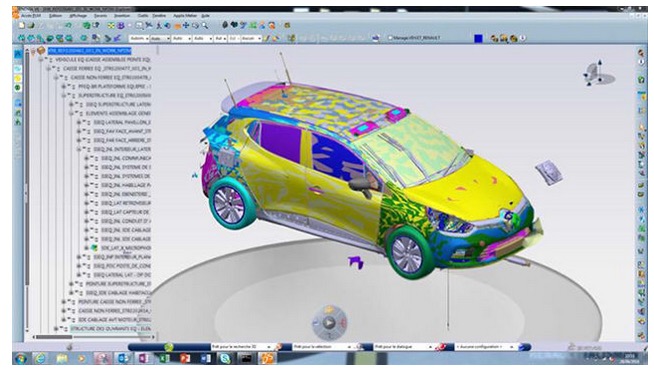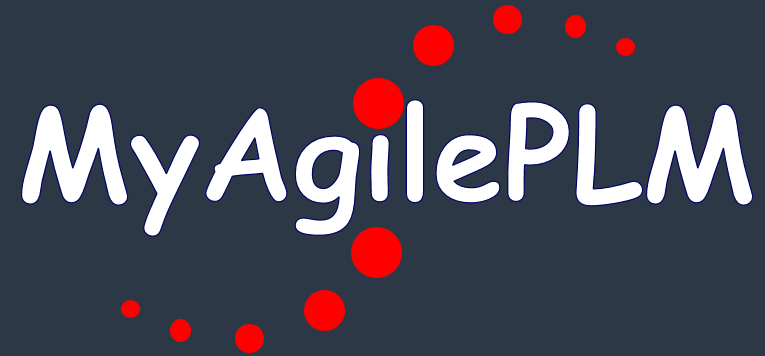
Engineering.com article – A Big Win as Yamaha “Does a Daimler” and Chooses Siemens PLM brings up big debates about Dassault Systemes vs Siemens PLM solutions. You can find my old blog articles about “Daimler” story here. The history is coming back to the time when Daimler decided to move to CATIA because of newly introduced version – CATIA V6, which required ENOVIA backend. Read more about it here.
A decade later, Engineering.com article suggested Dassault Systemes 3DEXPERIENCE is not very much a happy story and many customers are struggling to adopt it in production. Here is a passage from the article:
As for CATIA in its V6, 3DEXPERIENCE based version, the situation is more problematic. ENGINEERING.com has previously revealed that this solution, in combination with 3DEXPERIENCE’s product data backbone ENOVIA, so far has been a failure in Jaguar Land Rover’s iPLM project, which after seven years still isn’t up and running. The iconic British automaker is still mainly using their old combination of CATIA V5 and Siemens Teamcenter as a foundation for their product development process. Nor is another big 3DX/V6 reference object, Renault, a purely 3DX user. When I asked Renault’s PLM manager, Eric Delaporte, about this in late 2016, he said that they aren’t running a “clean” 3DEXPERIENCE solution; instead, as he explained, “We are aiming at 3DX, but as of today the solution in question is a mixed V5/V6 version.” While waiting for the evidence that the 3DX platform and the V6 architecture have the necessary industrial maturity, automotive companies have generally stuck to the well-functioning Dassault Systèmes V5 solution, often in combination with Siemens PLM Software’s Teamcenter/Tecnomatix suite.
While Engineering.com doesn’t offer much data, I picked the comment provided by one of the reader with some interesting details.
There’s been a real conundrum this decade with Dassault Systemes, it seems that the 3DX platform with V6 software offers unparalleled capabilities for product and business management, but it’s a mess for implementation. Almost everybody I know in companies transitioning to it are frustrated. 3DX is simply too ambitious at the moment, it requires multiple servers and a web-based configuration with Oracle/SQL database deployed to function. I think if they made the on-premise version as integrated as NX while retaining the UI and functionality, then it’d be the clear winner.
If you’re not deep enough into terminology, product, history and technological trajectories of Dassault Systemes, ENOVIA and 3DEXPERIENCE, I can suggest the following article by Michael Finocchiaro – Demystifying 3DEXPERIENCE.
Building on the success of CATIA V5 and Solidworks as well as their acquisition of MatrixOne in 2005, Dassault Systèmes created the V6 platform. As I described here, V6 was a fusion of placing VPM V6 on top of the MatrixOne foundation and was released in 2008. One of the biggest changes in V6 was the “no files” concept which meant that CATIA V6 no longer could open files off of a file system (file-based), but rather would be connected to a platform called ENOVIA V6 for access to and saving of geometry modified in session (“no files” as the data was stored on file servers and inside the database). This was quite an adjustment for IT departments that were used to file-based ways of working and did necessarily want to be obligated to buy a server. ENOVIA V6 was both this collaboration platform for CATIA V6 as well as the former MatrixOne “Centrals” portfolio for Enterprise PLM management of BOMs, Change, Supplier Relationships, etc. This also was confusing and is why people still refer to the platform as “ENOVIA”.
These publication made me think about what is potentially wrong with ENOVIA? Here is my take on the topic based on my experience. In a nutshell, it is about 3X complexity.
1. IT Complexity
ENOVIA combined with MatrixOne engine introduced a very complex combination of servers and components wrapped together to scale up as a single product. By itself, it requires lot of steps to install and configure. Combined with CATIA and other CAD packages it can reach the level of sophistication and configuration that is hard to manage by inexperience people.
2. Data modeling complexity
As any PLM product in the industry, MatrixOne has its own object modeling engine, which is based on Item-based object model. Designed by MatrixOne, it was already complex enough to implement and configure. To give you an idea about what is that, navigate to the following page to download ENOVIA Studio Platform V62011x ~900 page documentation [document was there at the time I wrote the article] It is ENOVIA branded version of MatrixOne documentation. One the top of MatrixOne object model and data management platform, there is CATIA Modeler. All together is a culmination of complexity in PLM industry.
3. CAD+PLM best practices complexity
ENOVIA (MatrixOne) had application that used for traditional PLM / cPDM activity such as BOM management, Change management, Project Management and others. These applications originally known as MatrixOne Centrals came into 3DEXPERIENCE in a new form with lot of transformation and enhancements. These applications are complex by themselves, but combined with CATIA and CAD modeling can demand very high level of implementation knowledge.
3DEXPERIENCE is a beautiful software masterpiece capable to manage very sophisticated tasks. So, don’t underestimate the complexity of things CATIA and ENOVIA can manage. But to get it done is not a simple task.Too much history and too much complexity. Combined with history and complexity of complex manufacturing organizations, 3DEXPERIENCE / ENOVIA can introduce a level of challenge that is not simple to manage. And to get there, you will have to pay a premium. There manufacturing companies decided to implement 3DEXPERIENCE should be prepared for two things: 1/ potentially very high cost and length of implementation; 2/ complexity of moving such hybrid environment towards cloud (private and public).
What is my conclusion? The next challenge for Dassault Systems is to simplify its platform and application stack. Lot of history is involved, but manufacturing environment is getting more dynamic and flexible. Old PLM applications were designed for 20-30 years lifecycle, today is different. It comes also from company business – product line development is more flexible with more changes as well as IT environment demanding end-to-end cloud with flexible data models, deployments in days and ability to share data in the heterogeneous environment of OEMs, contractors and suppliers. It is time for DS architects to spend some time near drawing board, otherwise, the magnitude of next challenges will be even bigger that manufacturing companies are facing today with 3DEXPERIENCE platform. Just my thoughts…
Best, Oleg
Want to learn more about PLM? Check out my new PLM Book website.
Disclaimer: I’m co-founder and CEO of OpenBOM developing cloud based bill of materials and inventory management tool for manufacturing companies, hardware startups and supply chain. My opinion can be unintentionally biased.
Image is credit Engineering.com article
The post What is wrong with 3DEXPERIENCE and ENOVIA? appeared first on Beyond PLM (Product Lifecycle Management) Blog.



Be the first to post a comment.